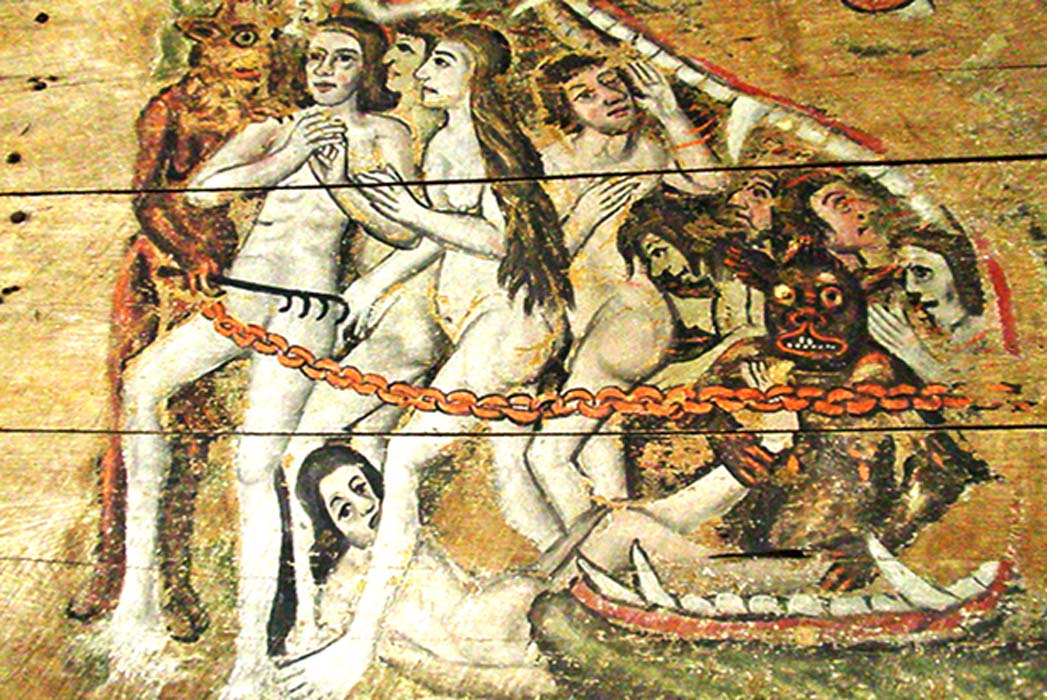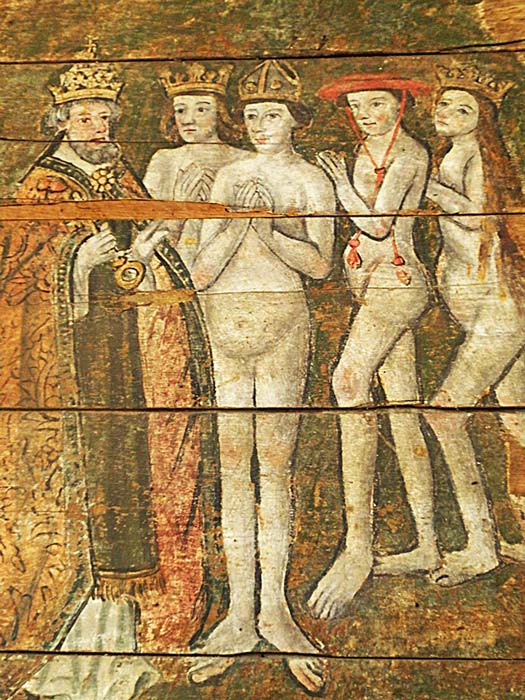
The Wenhaston Doom: A Surprising Medieval Relic, Doomsday Message—and a Reminder of Pre-Christian Traditions
A ‘Doom’ is a remarkable survival of a type of church decoration once common in the Middle Ages but largely destroyed during the iconoclastic excesses of the English Protestant Reformation during the reign of Edward VI (1547-1553) in the mid-16th century. I recently visited St Peter’s church in the tiny Suffolk (UK) village of Wenhaston (pronounced Wennerston). I was actually there to see an art exhibition however I also took the opportunity to take a closer look at the Wenhaston Doom.

The Wenhaston Doom (CC BY 2.0)
Doomsday Message
The painting depicts the Day of Judgement (or Doomsday), hence the generic name of ‘Dooms’ for these paintings, in a relatively simplistic style that could be easily understood by a largely illiterate congregation. Typically, they were located in a prominent position, such as on the chancel arch – so they would be visible to the entire congregation throughout the church service, or on the west wall at the back of the church – so they would be visible as the worshippers filed outside at the end of the service.
- The Violent Life and Times of Roger Bigod – A Medieval Player of the Game of Thrones?
- Hereford Mappa Mundi: Legendary Cities, Monstrous Races, and Curious Beasts in a Single World Map
- The Truth Behind the Christ Myth: Ancient Origins of the Often Used Legend – Part I
Wherever they were located, they served the same purpose, namely to remind the congregation of the Christian Bible’s message that on Doomsday, the dead will all be resurrected and rise from their graves for the Last Judgement, with the righteous going to Heaven, while sinners will be cast into the jaws of Hell to suffer eternal torment.

The Wenhaston Doom (© Charles Christian)
From the Dooms that still survive, they all follow broadly the same layout with Jesus and the Virgin Mary (Dooms were painted during at a time when Roman Catholicism was the official religion in England) plus possibly other saints (the Wenhaston Doom also features St John the Evangelist) at the top, with the ‘Heavenly Mansions’ to Jesus’ right and the Jaws of Hell (depicted as the mouth of a giant sea monster – the Leviathan) to his left. As for the resurrected – depending upon whether they were ‘saved’ (the ‘sheep’ belonging to ‘the Good Shepherd’) or damned (the ‘goats’) – they were either greeted by angels and saints, or else dragged on hooks and in chains by devils and prodded by demonic pitchforks into the fires of Hell.

St Peter offers welcome to the elite of society. (CC BY-SA 2.0)




